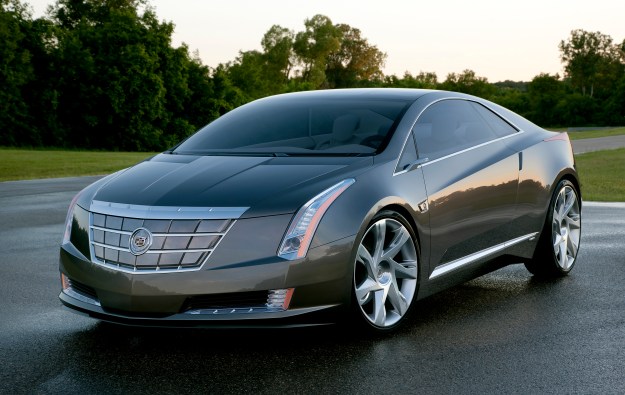 Cadillac has decided to produce a car in a new shade of green. General Motors announced today that it will produce an extended-range electric Cadillac. This is the same technology that is currently in use in Chevy’s Volt. Exact details about the car are very scarce at this point as it is in the very initial planning stages.
Cadillac has decided to produce a car in a new shade of green. General Motors announced today that it will produce an extended-range electric Cadillac. This is the same technology that is currently in use in Chevy’s Volt. Exact details about the car are very scarce at this point as it is in the very initial planning stages.
The car will be named the Cadillac ELR, where the E stands for electric of course. The press release was very tight lipped about the power train of the vehicle. We know that it will function in the same way as the Volt in that it will be a purely electric drive train, and when power gets low the gas generator will kick in to help charge the batteries. It is unknown if the Caddy will share the exact same engine components as the Volt. We sure hope that for something that looks as aggressive as the ELR that it will be a little more performance minded.

A recent study showed that consumers are still wary of electric cars, but the ELR won’t be a pure electric car so it might get a pass with consumers. The Chevy Volt is currently not selling as well as GM had hoped, and is falling behind the Nissan Leaf in recent sale comparisons. The ELR will most likely have a slightly different target audience, so it might fair better than it’s Chevy counterpart.

Editors' Recommendations
- 2024 Chevrolet Equinox EV: price, release date, range, and more
- Cadillac aims to balance its lineup with a small electric SUV
- Cadillac Lyriq first drive review: Electric manifesto
- The pros and cons of electric vehicles
- 2022 Chevrolet Bolt EUV first drive review: Maintaining momentum


